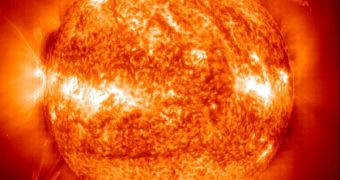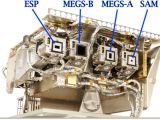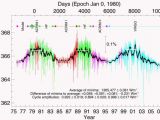At first glance, it may be hard to believe that our Sun goes through a cycle of minimum and maximums every 11 years. In any day of the year, looking at the star in the skies reveals the same ball of light, with no discernible variations in its brightness. However, astrophysicists know that we are not able to observe the variations in visible light, and look at the stat in EUV (extreme ultraviolet) wavelengths, where these changes become apparent. This will be the goal of a new scientific instrument that will fly aboard the Solar Dynamics Observatory (SDO) as early as this winter, Space Fellowship reports.
The new instrument is called EVE, which stands for EUV Variability Experiment. “The problem is, human eyes are tuned to the wrong wavelength. If you want to get a good look at solar activity, you need to look in the EUV,” University of Colorado in Boulder (UCB) solar physicist Tom Woods says. He reveals that, while we may not see them with our own eyes, solar flares exist and are, indeed, caused by explosions as powerful as a billion atomic bombs. The thing is that they do not change the overall, visible-wavelength brightness of the Sun. They do appear very clear on EUV readings, however.
“EVE gives us the highest time resolution (10 sec) and the highest spectral resolution (< 0.1 nm) that we’ve ever had for measuring the sun, and we’ll have it 24/7. This is a huge improvement over past missions,” Woods adds. He is also the lead scientist for the EVE instrument. “Solar minimum is a quiet time when we can establish a baseline for evaluating long-term trends. All stars are variable at some level, and the sun is no exception. We want to compare the sun’s brightness now to its brightness during previous minima and ask ourselves, is the sun getting brighter or dimmer?” he continues.
The expert adds that there is an absolute need for EVE at this point. Over the past 12 years, the Sun has appeared to grow dimmer, showing a 0.02-percent decrease in “irradiance” at visible wavelengths, and a six-percent drop in the EUV. High-precision measurements conducted with the new instrument will provide NASA with the necessary confirmation or refutation of previous observations. “The EUV portion of the sun’s spectrum is what changes most during a solar cycle, and that is the part of the spectrum we will be observing,” Woods concludes.

 14 DAY TRIAL //
14 DAY TRIAL // 

